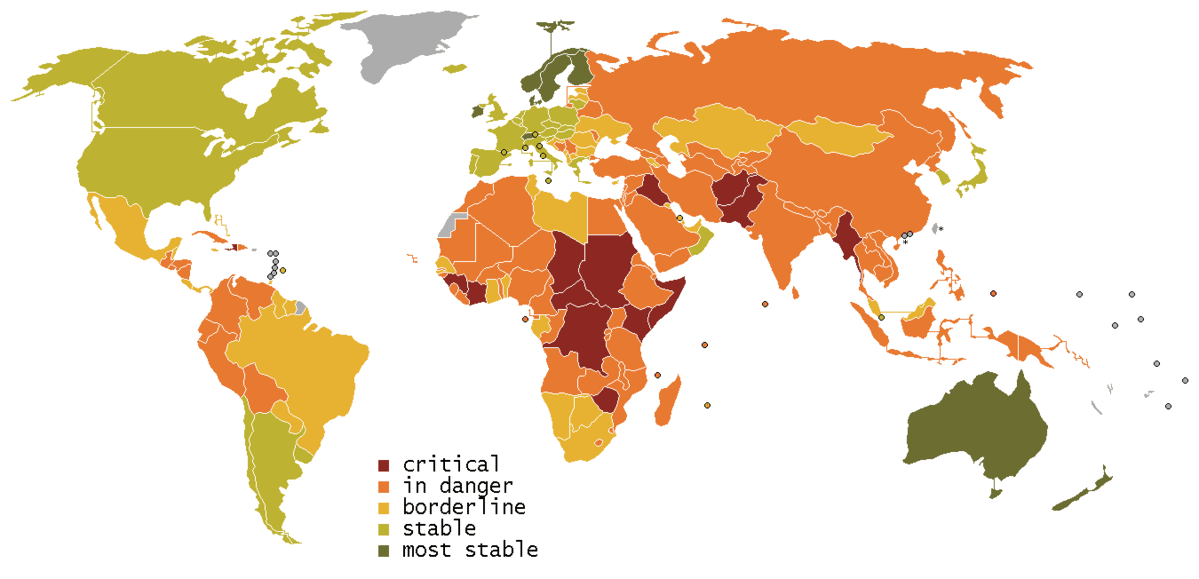References for Brightwork Articles on Indian IT Discrimination
Executive Summary
- These are the references that were used for our articles on Indian IT Discrimination.
Learn why so few entities in the IT space include references in their work.
Introduction
This is the reference list for the IT discrimination articles, as well as interesting quotes from these references at Brightwork Research & Analysis.
There are so many references within this reference article that it is useful for those doing research on Indian IT.
You can select the article title to be taken to the article.
Reference #1: Article Titled:
The Evidence that Diversity Does Not Improve Innovation
*https://www.brightworkresearch.com/diversity-improve-innovation/
Reference #2a and #2b and #2c and #2d and #2e and #2f: Article Titled:
How Indian IT Workers Discriminate Against Non-Indian Workers
How Indians Rig Job Descriptions To Block Domestic Employment And Enable H1-B Entry
How Indians From One Region – Andhra Pradesh Came To Control the H1-B Program
How Indians Have Instituted The Indian Caste System In US Workplaces
Can a Non-Indian Worker Be Successful in a Predominantly Indian Company Or Indian Environment?
The Importance in Hiding The Speed of Takeover of US IT By Indians
Is Indian Emigration Beneficial For India?
https://www.reuters.com/article/us-infosys-settlement-idUSBRE9A70IC20131108
https://www.amnestyusa.org/the-worlds-worst-places-to-be-a-woman/
http://news.trust.org/item/20180612134519-cxz54/
*https://www.antislavery.org/slavery-today/bonded-labour/
https://rsf.org/en/ranking
*https://www.documentcloud.org/documents/1303737-wikileaks-hyderabad-fraud.html
https://www.theguardian.com/us-news/2014/oct/28/-sp-jobs-brokers-entrap-indian-tech-workers
https://www.petition2congress.com/ctas/most-h1b-holders-are-fake
https://www.ibm.com/employment/inclusion/our-culture.html
https://www.technologyreview.com/s/613344/indias-water-crisis-is-already-here-climate-change-will-compound-it/
https://www.quora.com/Are-there-too-many-Indians-living-in-the-US-who-forged-or-faked-their-work-experience-or-educational-certificates-to-get-a-hold-of-a-US-H1-B-visa-If-yes-how-different-are-they-from-illegal-immigrants
https://www.aljazeera.com/indepth/opinion/india-wealth-inequality-growing-rapidly-180125084201143.html
https://en.wikipedia.org/wiki/Income_inequality_in_India
https://en.wikipedia.org/wiki/File:Failed-states-index-2009.png *https://www.nytimes.com/2012/04/12/world/asia/12iht-letter12.html
*https://www.nytimes.com/2012/04/12/world/asia/12iht-letter12.html
https://asia.nikkei.com/Business/Business-Trends/India-s-IT-sector-feels-squeeze-of-higher-US-labor-costs
https://www.transparency.org/cpi2018
https://www.quora.com/Is-there-any-bias-among-Indians-of-hiring-other-Indian-workers-in-the-IT-industry
Reference #3: Article Titled:
Breitbart on Mass Domestic Worker Discrimination in Favor of Indians
https://www.breitbart.com/politics/2019/10/02/census-shows-indian-graduates-are-pushing-americans-out-of-the-tech-industry/#disqus_thread
This is just one floor of Walmart out 3 floors where 1000 and 1000 opt(bentonville, AR)students(mostly fake) are working under 20 to 30$/h and killing white color jobs.
TCS, COGNOZANT, INFOSYS,only hire Indians. How many more proof do we need. ? pic.twitter.com/PquTPhXWYE— Agram Bagram bhooo (@S1S1B1) March 23, 2019
Reference #4: Article Titled:
The Amazing Fact That 99.7% of Tata Consulting is Indian
https://patch.com/district-columbia/washingtondc/u-s-tech-workers-lose-tata-discrimination-lawsuit
*https://www.amazon.com/Sold-Out-Billionaires-Bipartisan-Crapweasels/dp/1501115944/
Reference #5: Article Titled:
Is the Opposition of Indian Merchants to Amazon Expanding into India Based on Anti-White Racism?
https://www.businessinsider.com/indian-shop-owners-protesting-amazon-call-bezos-economic-terrorist-2020-1
*https://www.ustechworkers.com/college-grads-launch-protest-against-h-1b-middle-class-outsourcing/
https://www.linkedin.com/pulse/last-mile-logistics-who-must-optimize-loknath-rao-lok-/
https://mattstoller.substack.com/p/what-is-the-point-of-economics
https://www.bbc.com/news/business-47857583
https://www.wsj.com/articles/u-s-tech-giants-bet-big-on-india-now-the-rules-are-changing-11575386675
https://www.ftc.gov/enforcement/cases-proceedings
https://www.thehindu.com/news/international/indian-h1b-visa-holders-rally-for-reform-outside-white-house/article26235370.ece
https://www.quora.com/Do-local-shopkeepers-in-india-pay-taxes
https://www.bloomberg.com/opinion/articles/2016-12-13/india-must-remember-protectionism-isn-t-patriotic?sref=tnzoy5oH
*https://www.libertynation.com/american-workers-protest-h1-b-visas/
https://qz.com/india/1774603/trump-obama-ignored-victims-of-h-1b-in-us-says-think-tank/
Reference #6: Article Titled:
How H1-B Indians Create a Hostile Work Environment for Women
https://blogs.spectator.co.uk/2019/09/the-silence-surrounding-grooming-gangs/
https://www.theguardian.com/commentisfree/2018/apr/27/india-abuse-women-human-rights-rape-girls
*https://protectusworkers.com/to-att-women-do-not-shake-hands-with-indian-male-with-whom-you-are-training-your-job/
Reference #7: Article Titled:
How Indians Exploit US Diversity Rules While Practicing Extreme Levels of Discrimination
https://your-kevin.com/
Reference #8: Article Titled:
How Indians Lie About Indian Corruption to Non Indians
https://your-kevin.com/
Reference #9: Article Titled:
Lean In: Just Not at Facebook: FaceBook’s Mass Hypocrisy on Workers and Discrimination
https://news.trust.org/womens-rights/
https://en.wikipedia.org/wiki/Facebook%E2%80%93Cambridge_Analytica_data_scandal
Reference #10: Article Titled:
How the Awful and Abusive Indian Employment System Works
https://workplace.stackexchange.com/questions/20945/what-is-a-relieving-letter-what-are-the-consequences-of-not-having-one
*https://www.hrishiblogbuddhi.com/understanding-the-a-to-z-of-notice-periods/
https://www.quora.com/How-will-my-future-employment-be-affected-if-I-abscond-from-my-current-company-which-is-an-MNC-in-India
https://www.latimes.com/local/lanow/la-me-ln-uc-audit-admissions-20160328-story.html
https://en.wikipedia.org/wiki/Facebook%E2%80%93Cambridge_Analytica_data_scandal
Reference #11: Article Titled:
Age Discrimination As Yet Another Way to Reduce IT Labor Costs
https://www.linkedin.com/pulse/millennials-track-majority-workforce-2025-accenture-van-t-noordende/
https://www.bloomberg.com/news/articles/2019-08-09/a-billionaire-software-mogul-doesn-t-want-his-company-to-grow-up
https://www.huffpost.com/entry/trump-h-1b_b_5890d86ce4b0522c7d3d84af
https://www.hrw.org/topic/childrens-rights/child-labor
https://neweconomics.org/search/issue/banking-and-finance
https://www.trekearth.com/gallery/Europe/Austria/East/Vienna/photo1072852.htm
https://www.forbes.com/sites/dianahembree/2018/05/22/ceo-pay-skyrockets-to-361-times-that-of-the-average-worker/
https://www.hrw.org/news/2019/06/12/what-congress-can-do-end-child-labor-us
Fake News Alert: Media Conglomerates Convince FCC That Facebook Can Replace Local News Stations
https://news.sap.com/2019/01/sap-young-professionals-program-career-shifts-high-gear/
https://en.wikipedia.org/wiki/Concentration_of_media_ownership
https://medium.com/@MattTurner4L/essay-media-concentration-and-the-market-model-has-turned-the-press-into-lapdogs-not-watchdogs-c7969550689
When assessing media ownership and consolidation in both the United Kingdom and United States, it becomes clear that while there are hundreds of different publications and broadcasters, there is only an illusion of choice, and that freedom from government control and the competitive nature of the free market have failed to truly allow diverse media content and regulate media conglomerates, who now possess an extraordinary amount of power and influence. In the United Kingdom, 70% of national newspaper circulation is controlled by three different companies, leading the Media Reform Coalition (2014: 1) to claim that concentration has “reached endemic levels and is undermining the quality and diversity of output on which citizens rely.” Meanwhile, in the United States, just six companies control 90% of the media: a stark difference from 1983, when fifty companies controlled 90% of the media (Lutz 2012).
The Curran et al. (2009) study found that Americans were less informed about hard news than countries such as Denmark and Finland, where public sector broadcasters had a larger share of the audience.
Moreover, it found that public service models “minimize the knowledge gap between the advantage and disadvantaged” in comparison with an American-style private ownership model, and therefore “contributes to a more egalitarian pattern of citizenship”
While one cannot establish causation, it is possible that one of the factors that has contributed to low voter turnout in the United States and high voter turnout in Denmark is the differing media coverage of hard news in the private and public led media spheres. This insinuates that private media ownership has a negative impact on media content overall, as the content is increasingly failing to fulfil its function of promoting informed citizenship and democratising information to the public at large.
A further criticism of the privately owned media models is that they are often beholden to big business, due to their reliance on advertising to maintain a profitable venture (Herman and Chomsky 1998). The implications this has for media content stems from the “corresponding influence of advertising values on the news production processes” (Mullen and Klaehn 2010: 218), namely, a conflict of interest could easily arise due to potential discrepancies committed by advertisers. It is entirely plausible that the private media’s reliance on advertising could mean that negative content about the advertisers are omitted from public debate, and that “the probability of an event/issue becoming news is: inversely proportional to harm the information might cause investors or sponsors” (McManus 1995, cited in Rolland 2006: 942). This theory is supported by a scandal that rocked The Telegraph newspaper after it was alleged by a former employee (who resigned over the issue) that The Telegraph contrived to omit damaging reports about HSBC’s banking practices out of fear of losing out on lucrative advertising deals. According to Peter Oborne (2015), “you needed a microscope to find the Telegraph coverage” of reports that HSBC had been participants in a global tax evasion scheme — an issue that was perceived by most other national broadcasters and newspapers as hugely important. Therefore, this illustrates that the reliance of private media outlets on advertising revenue can have a damaging impact on media content through omission of stories that are clearly in the public interest.
